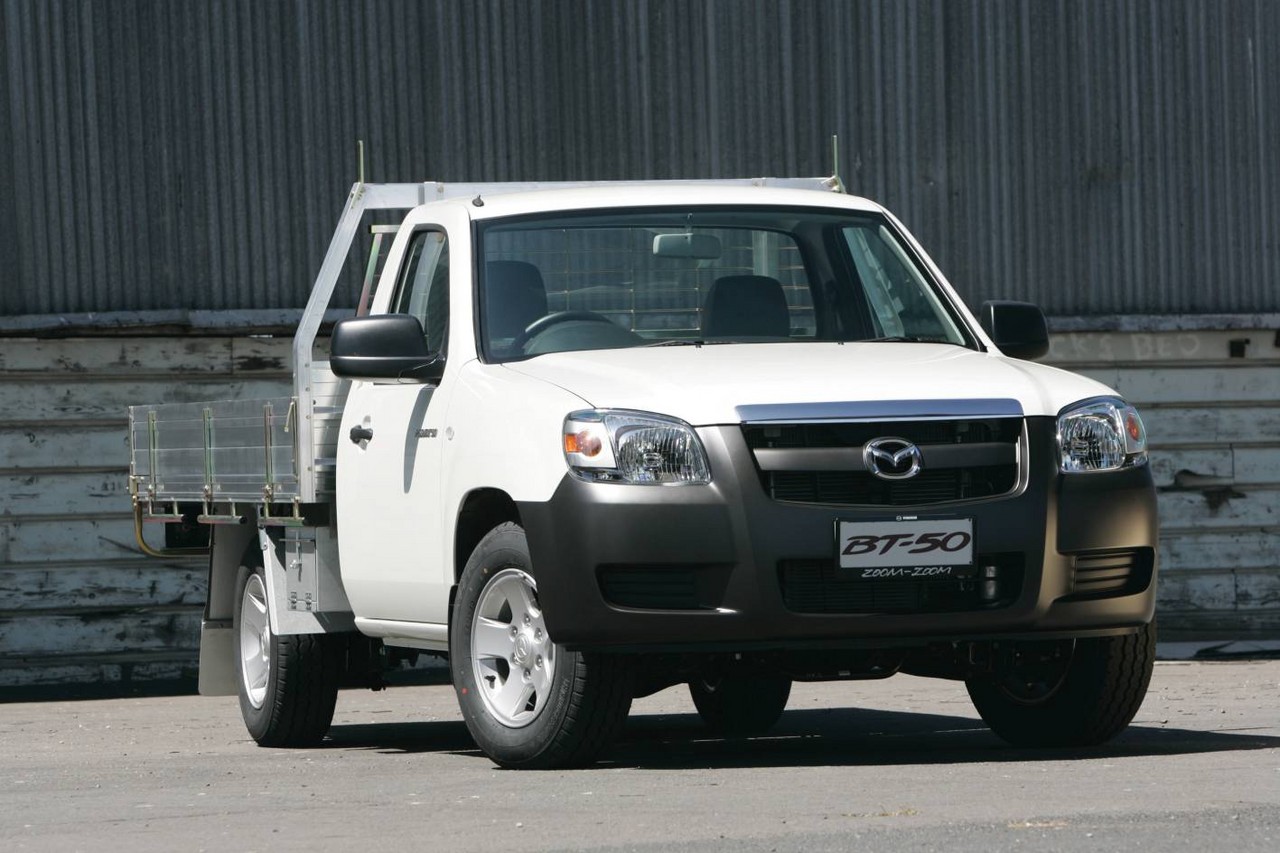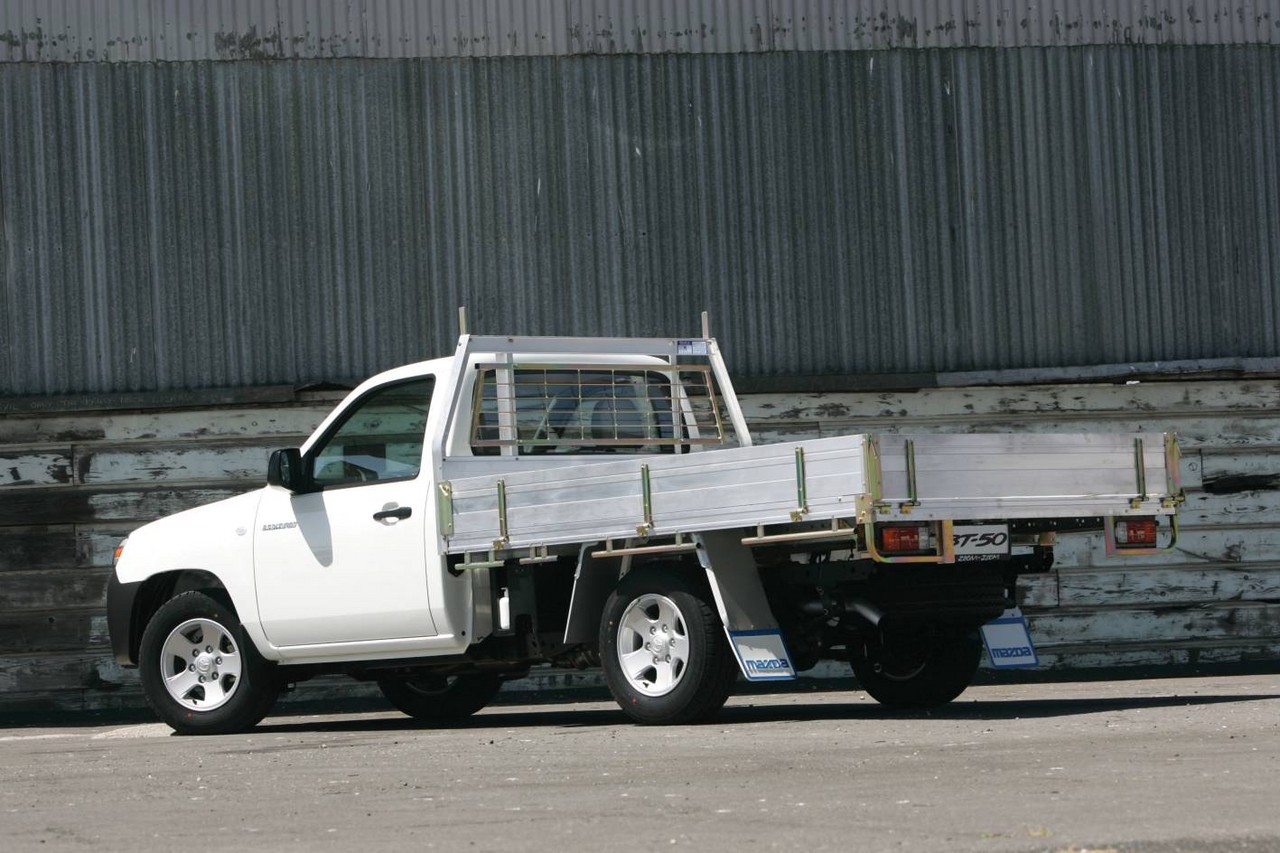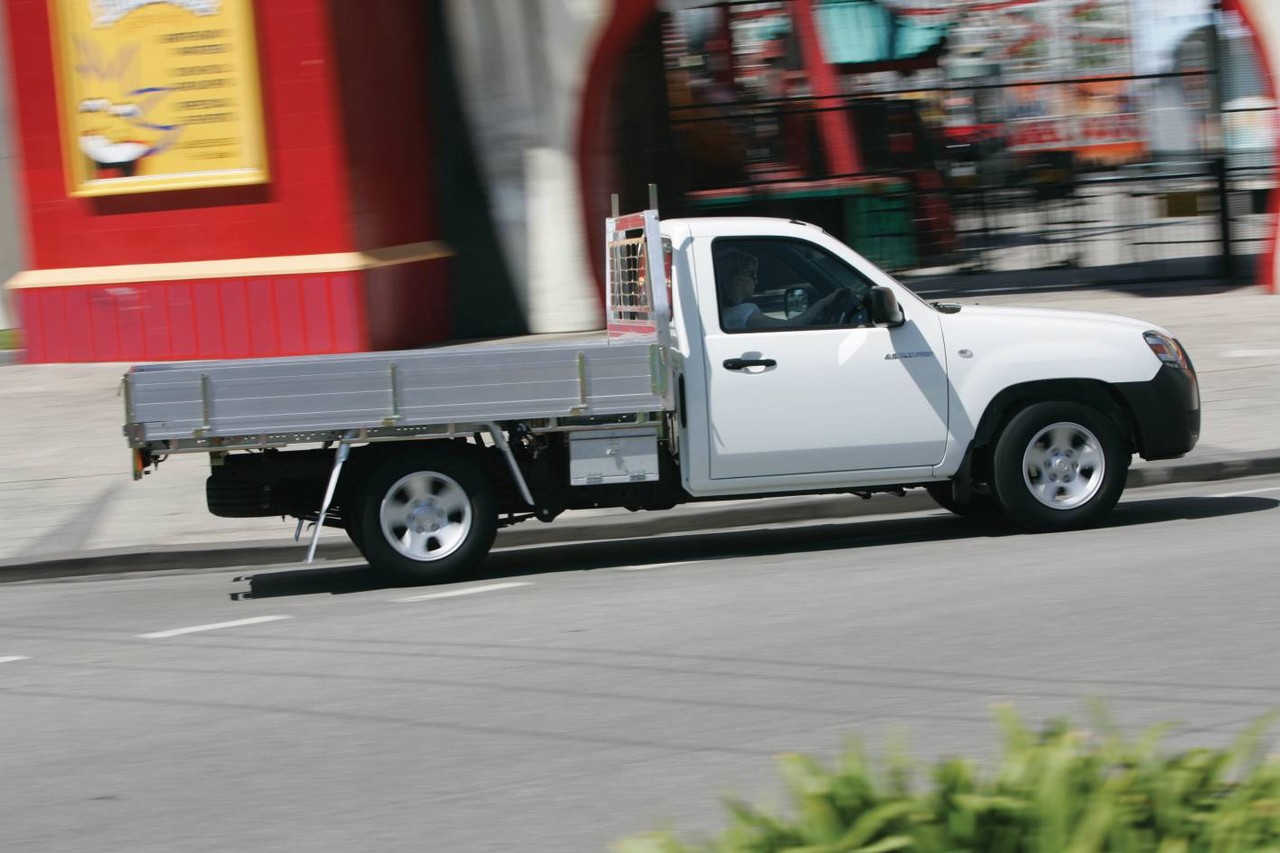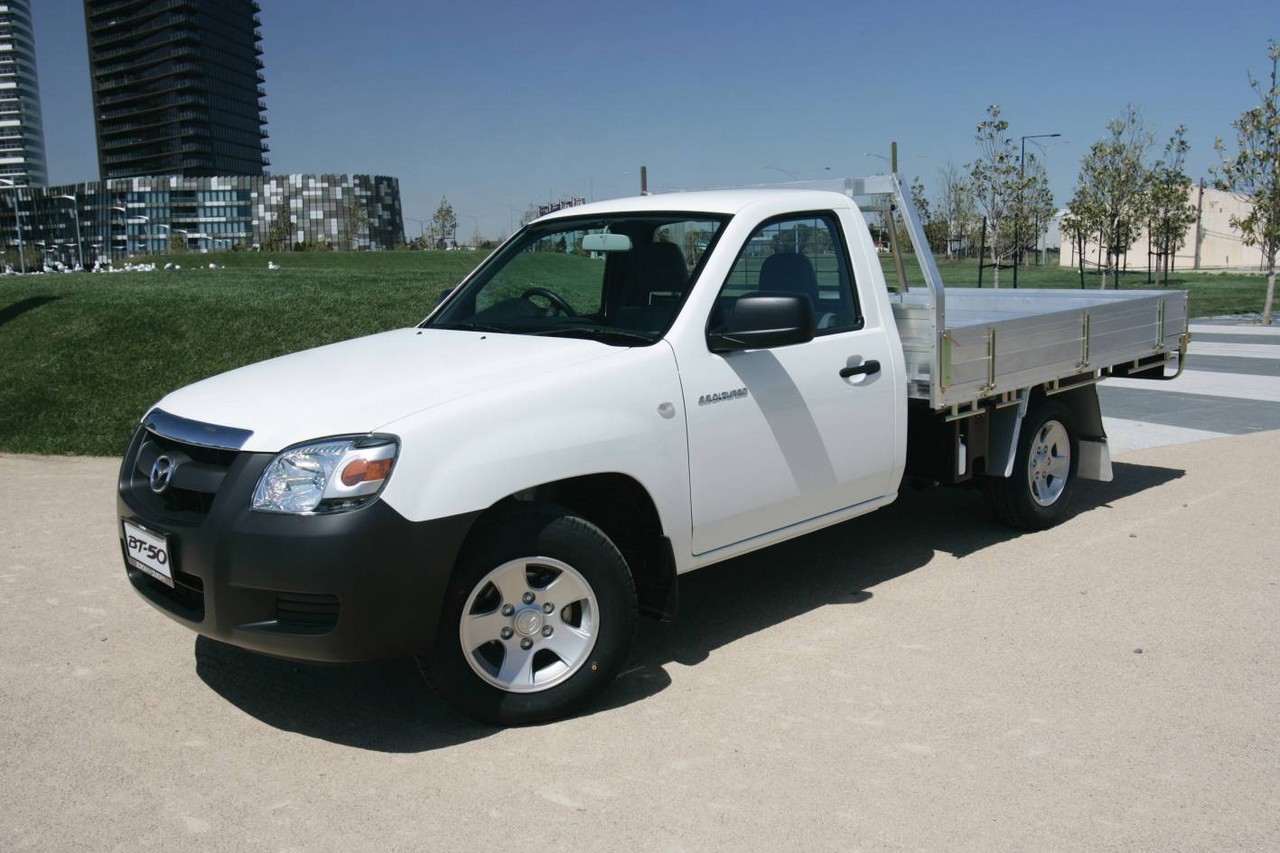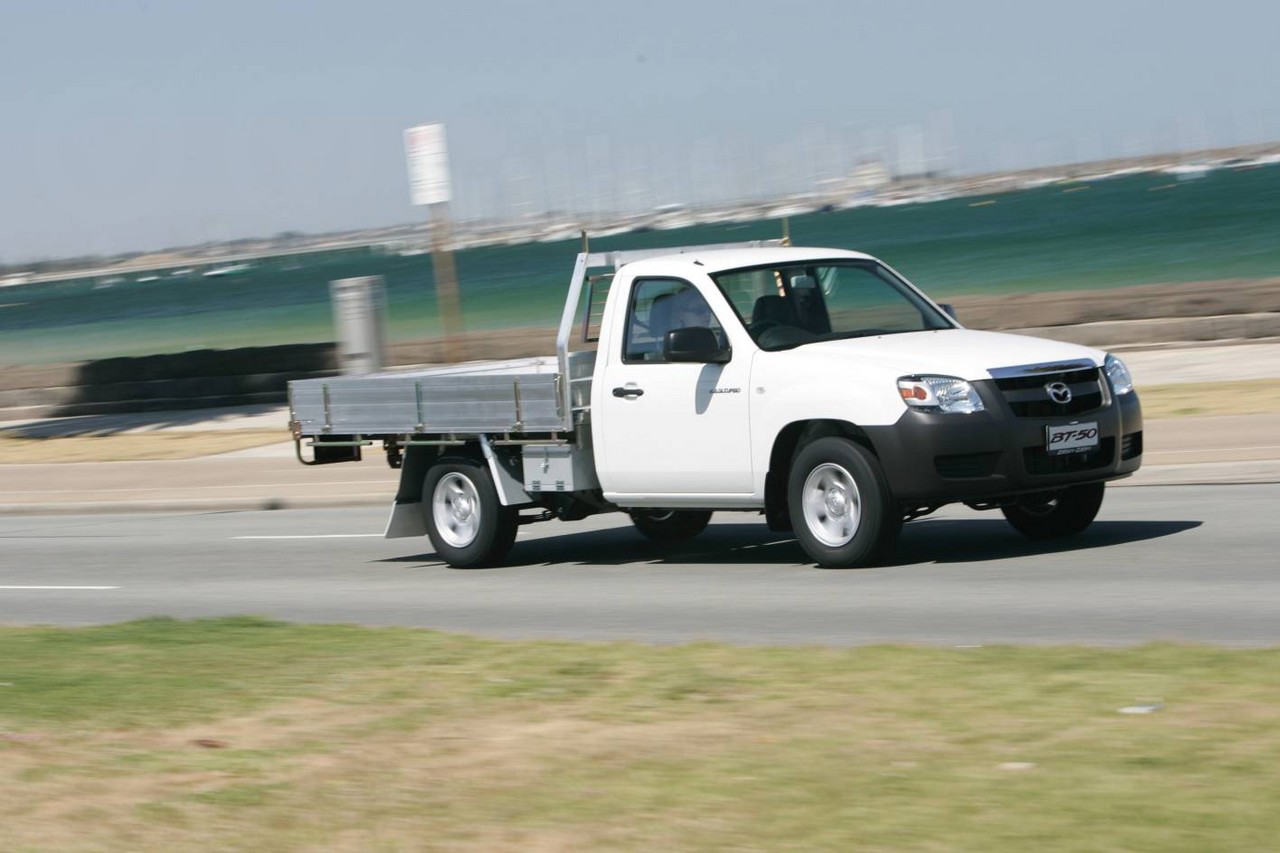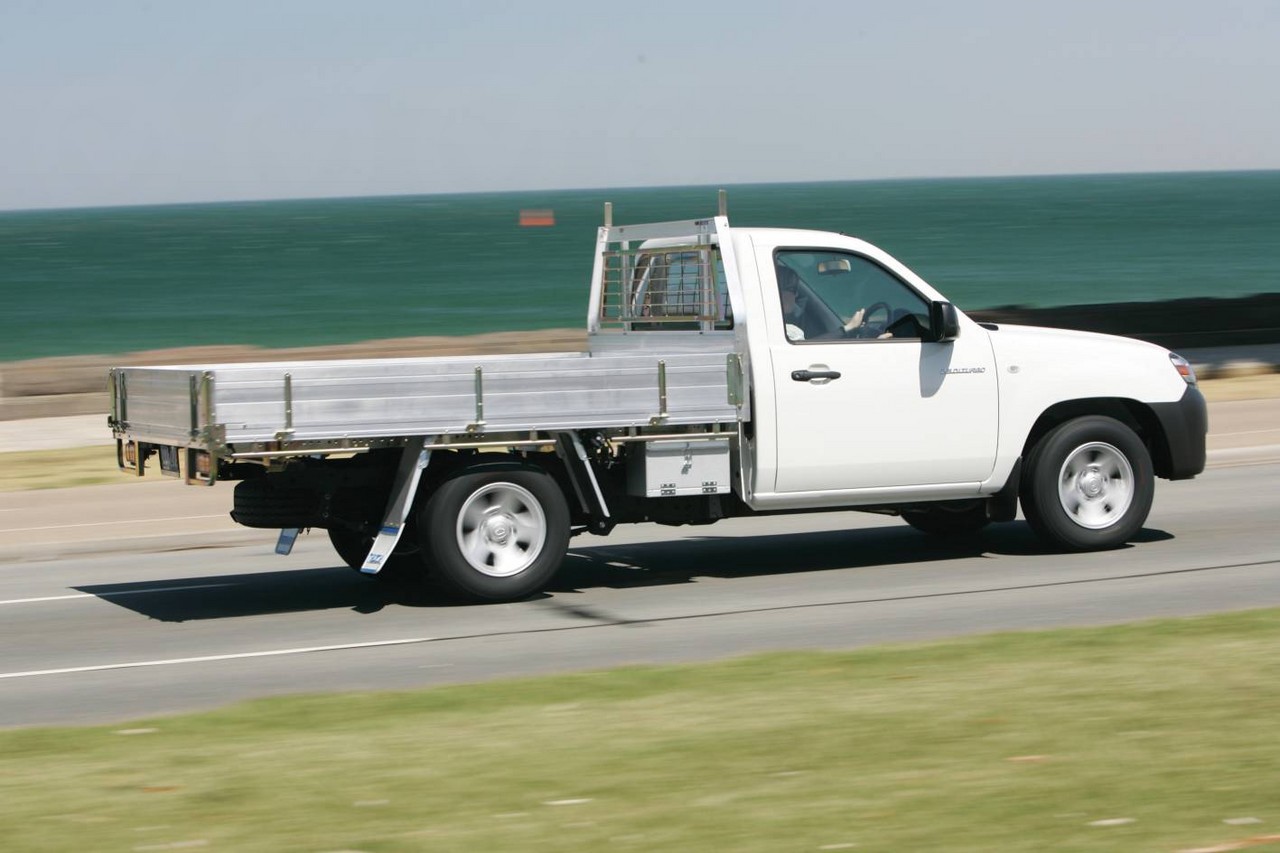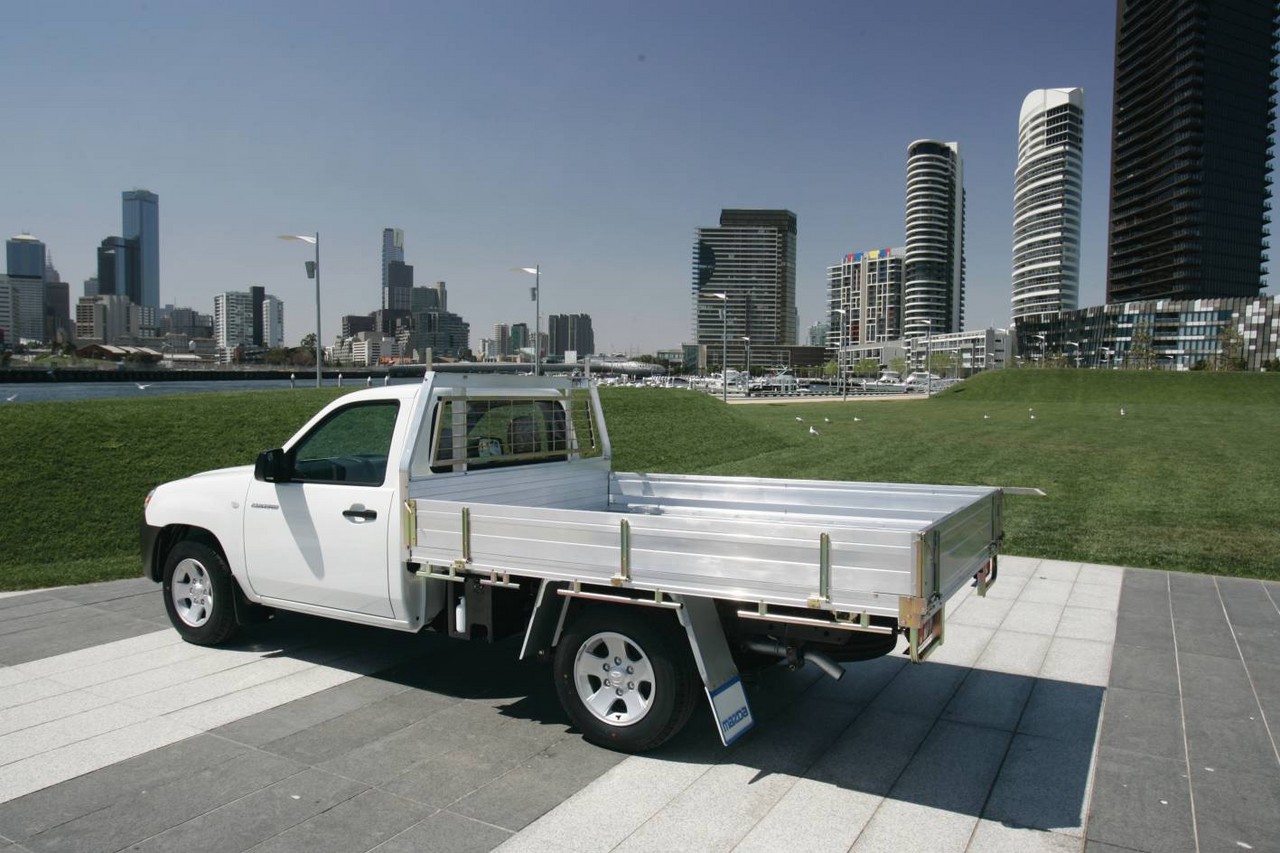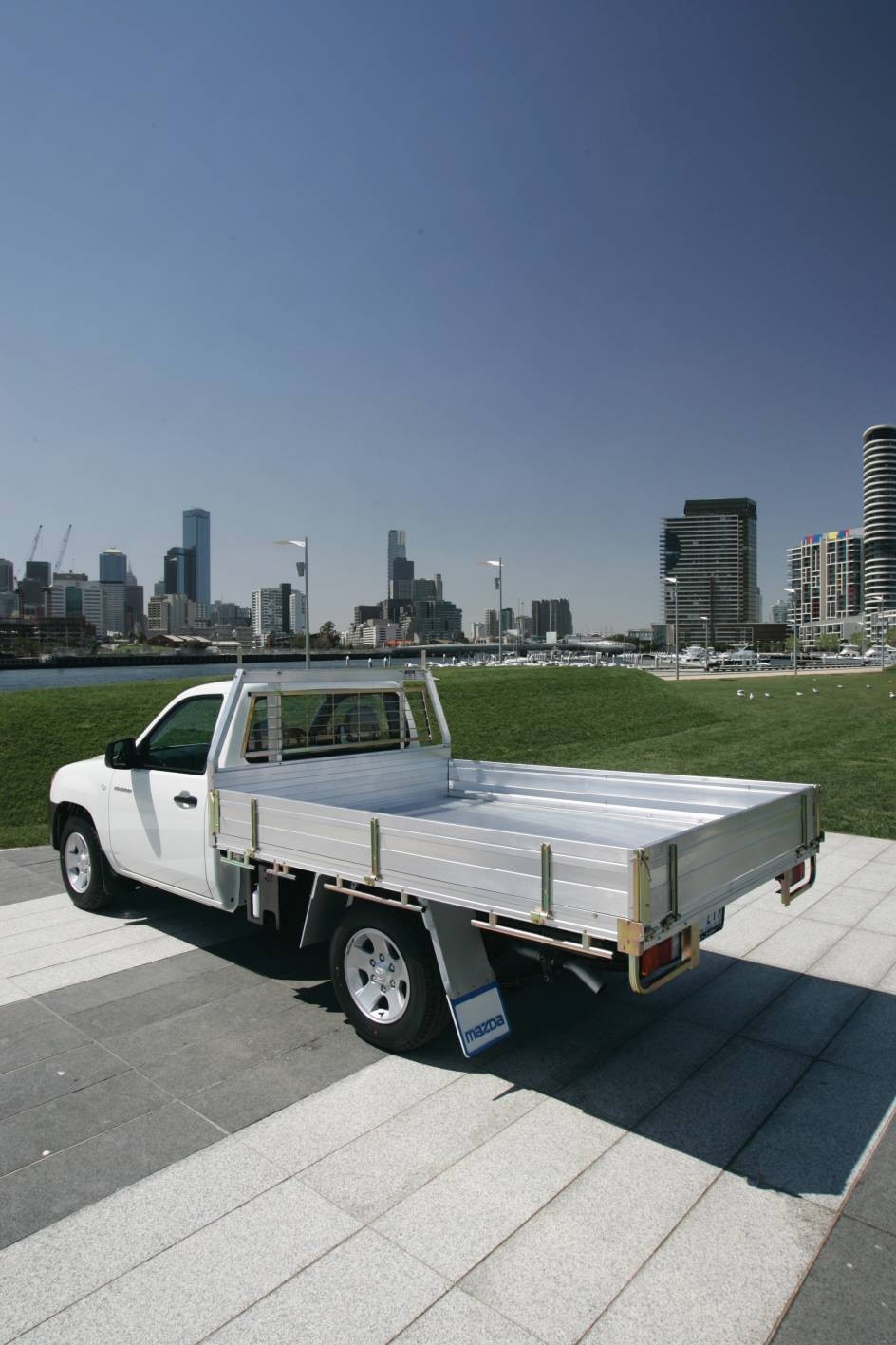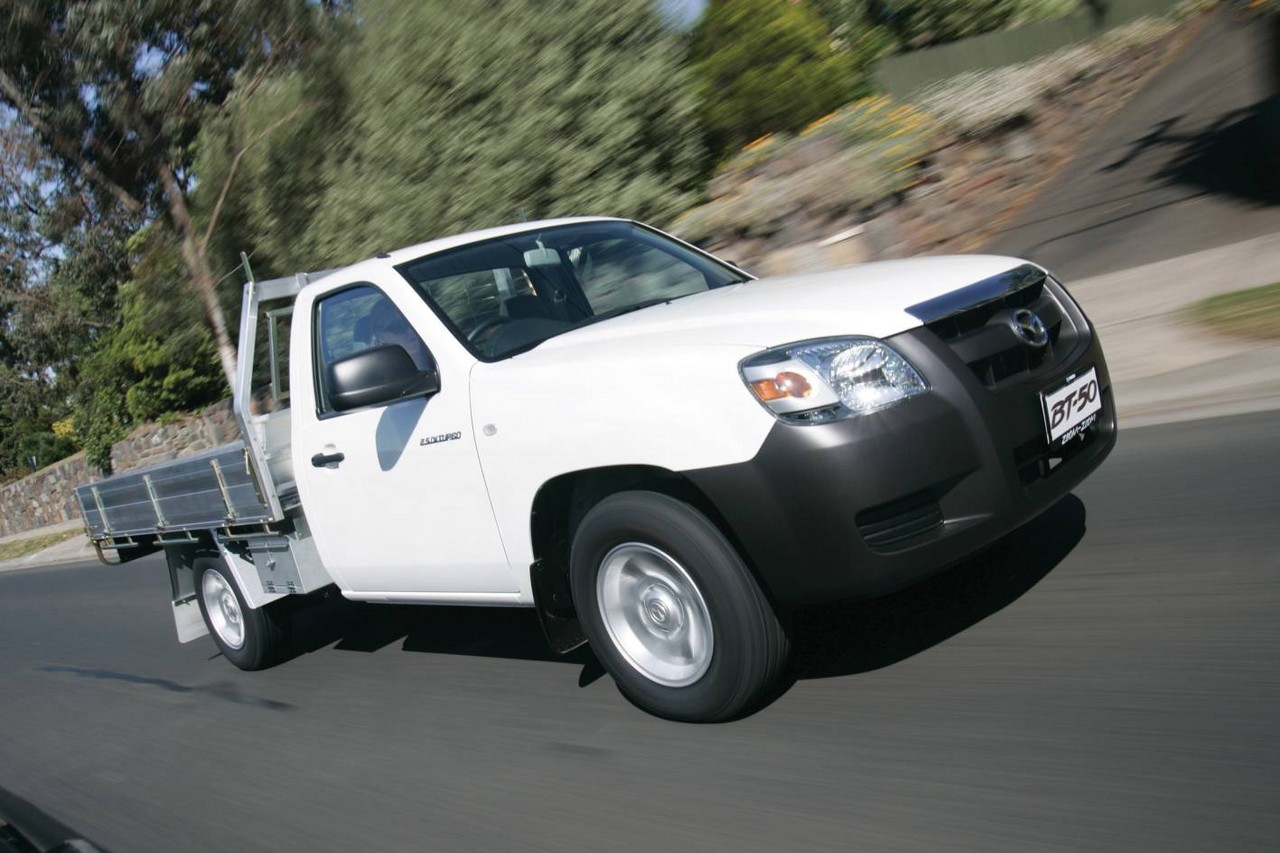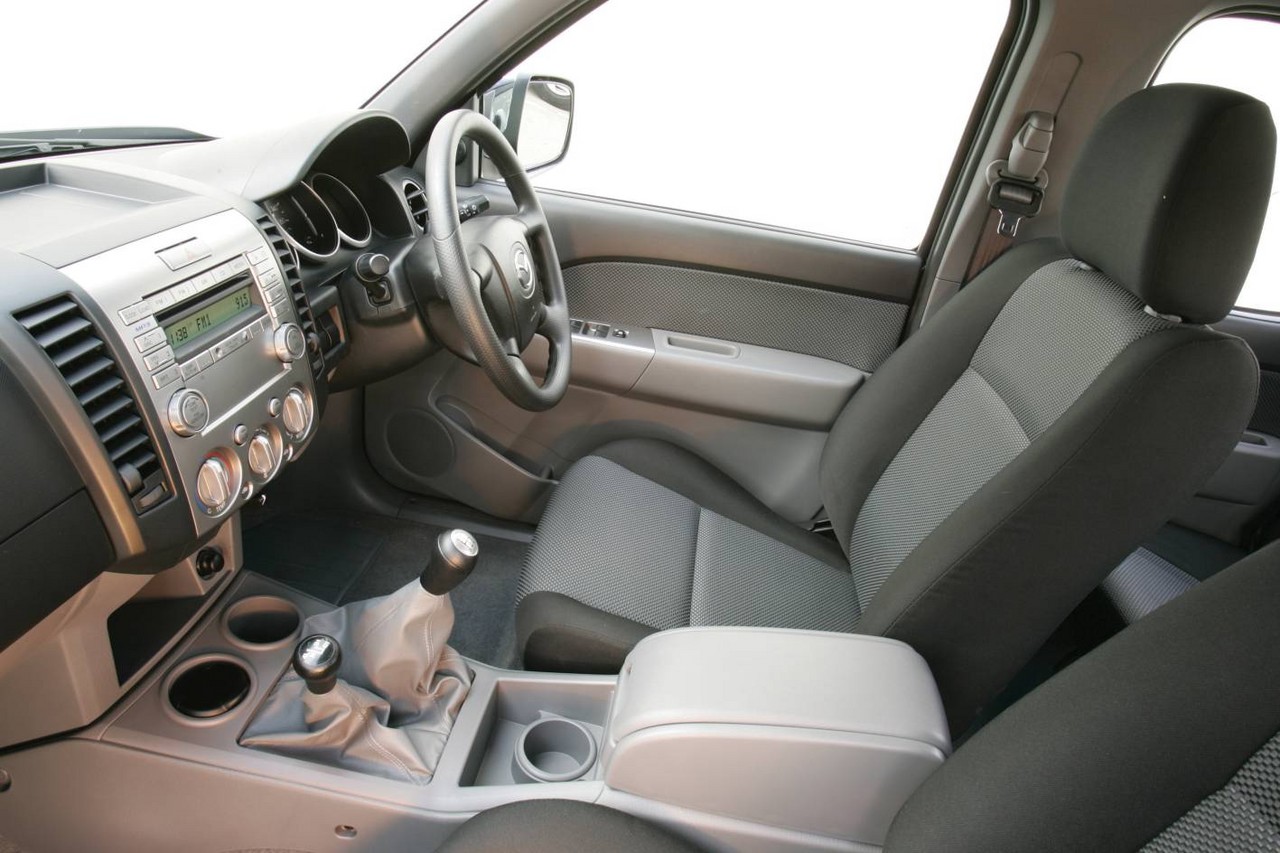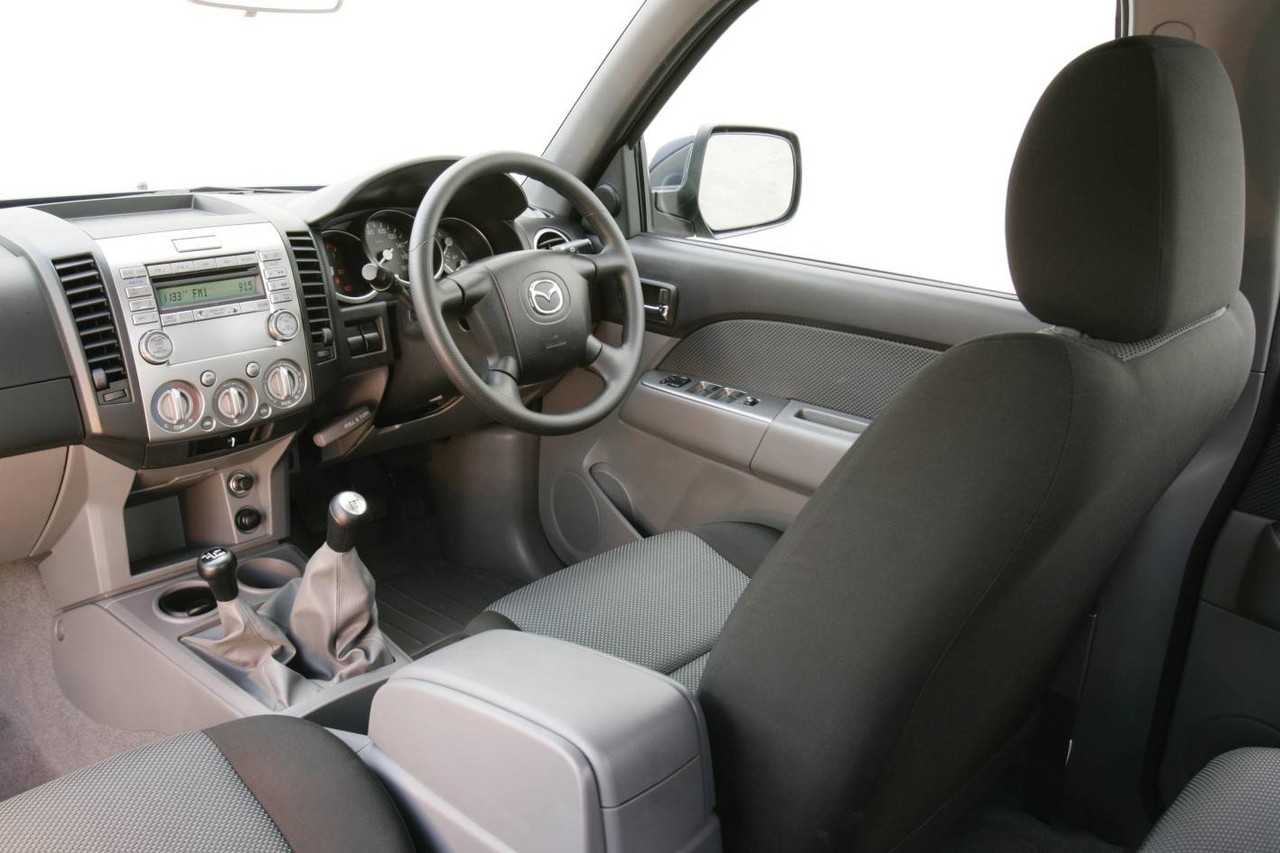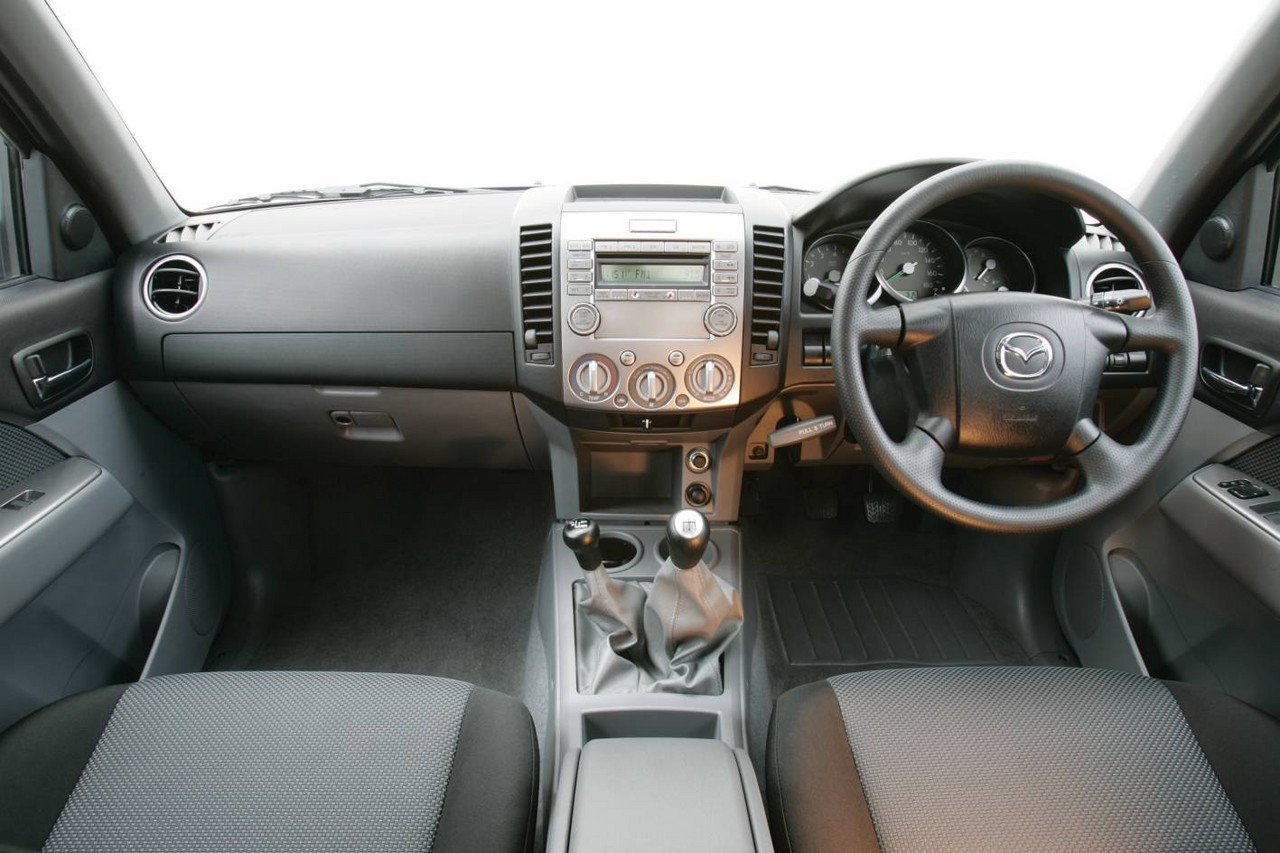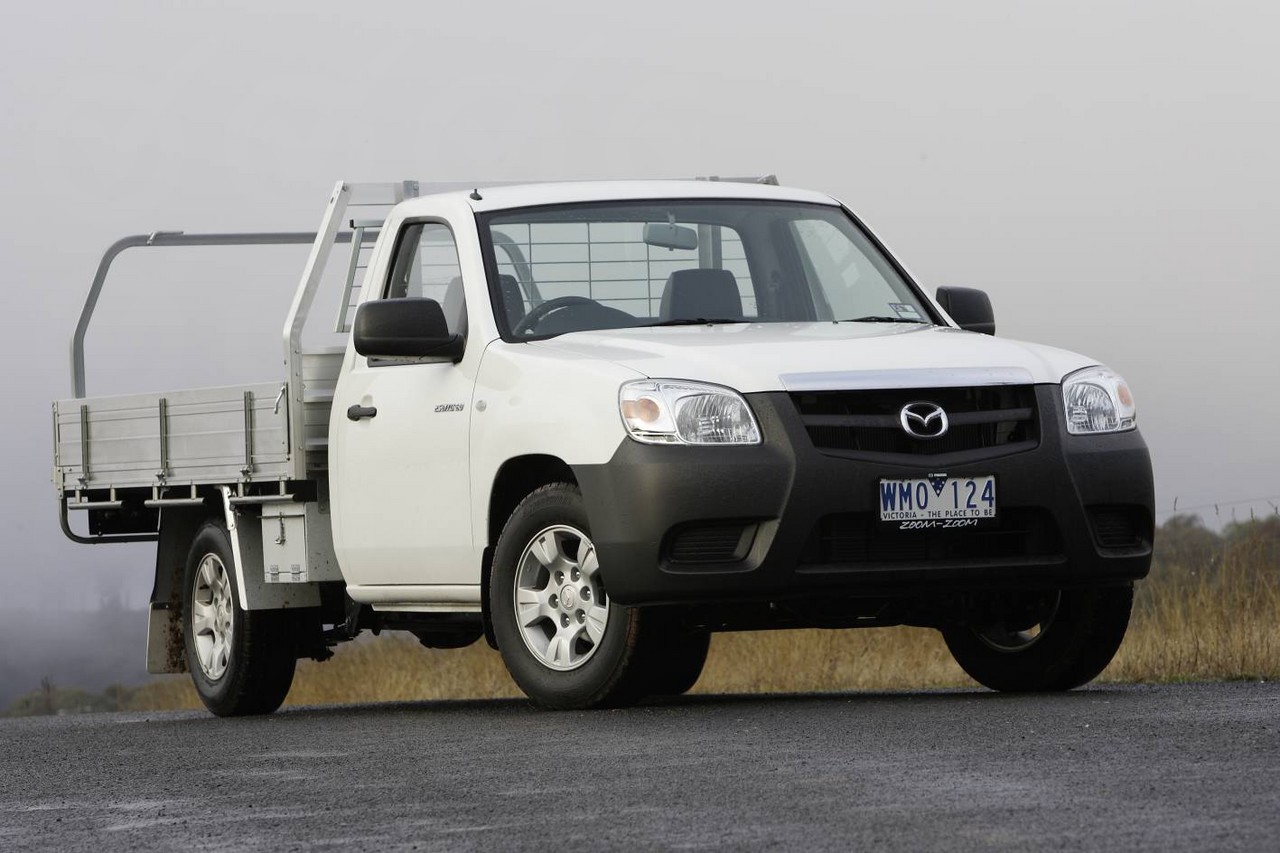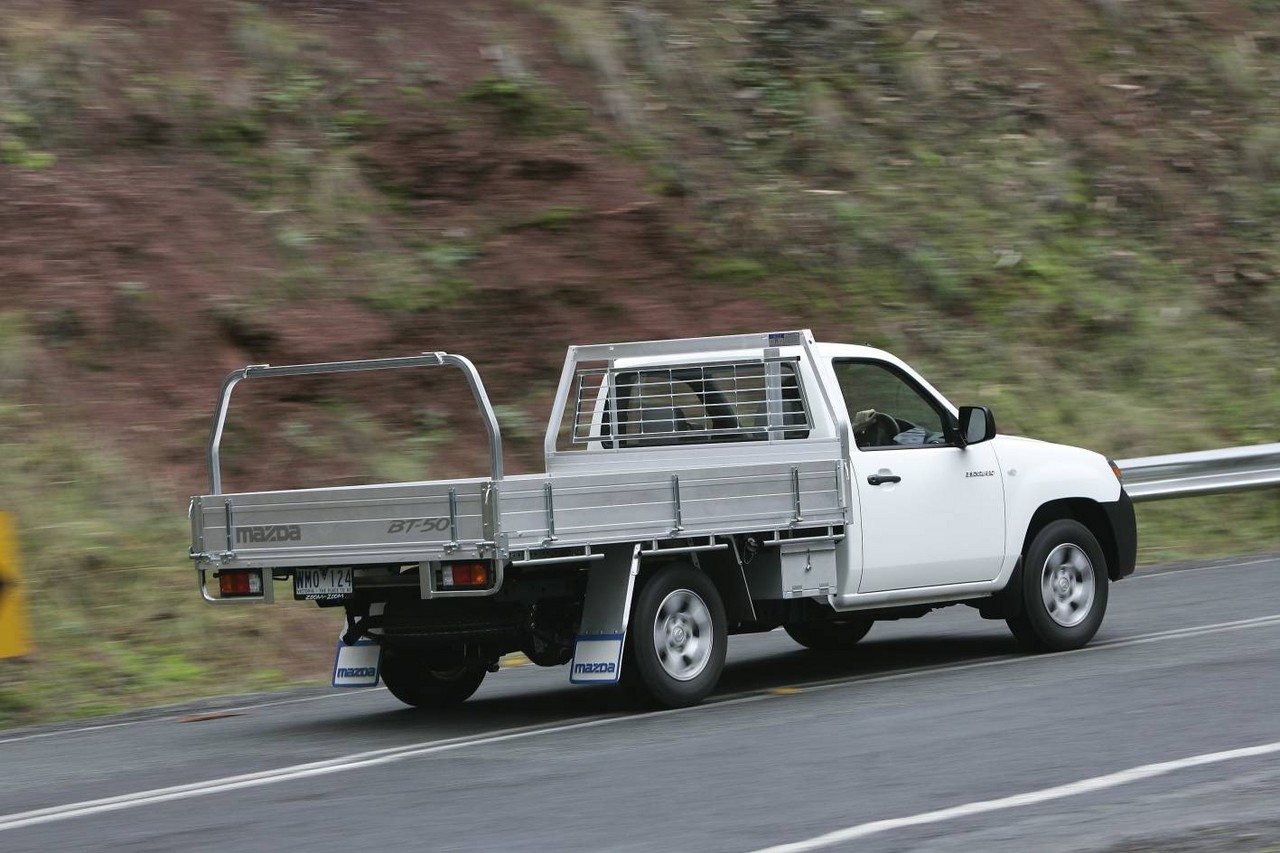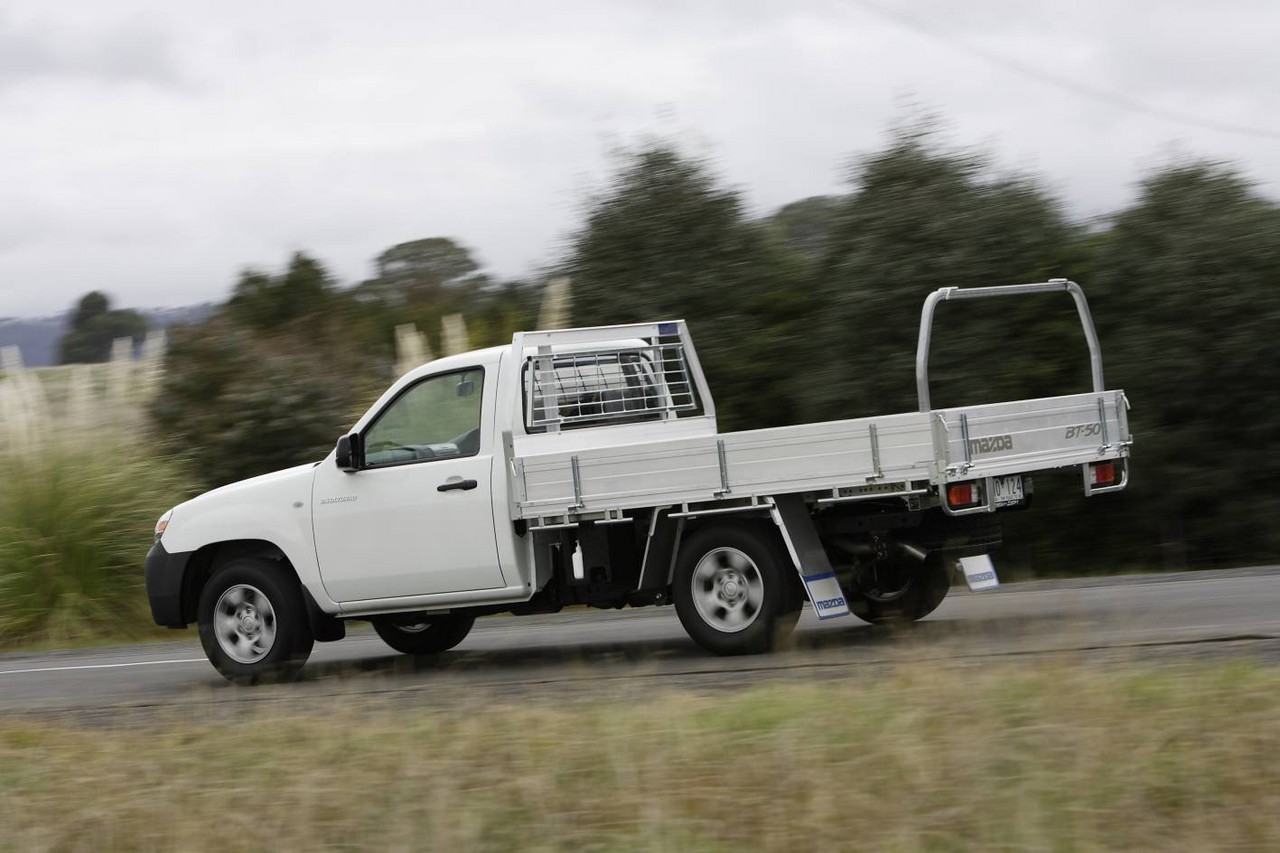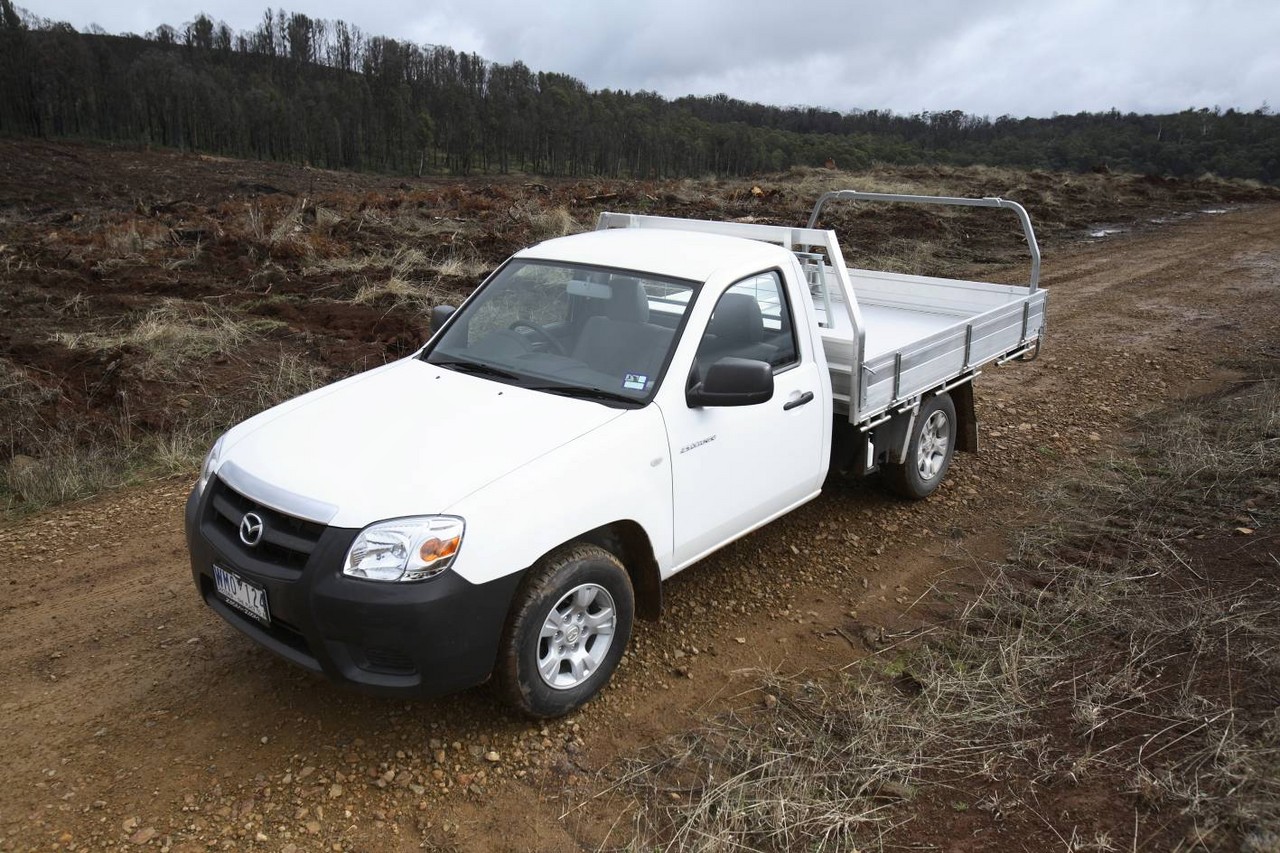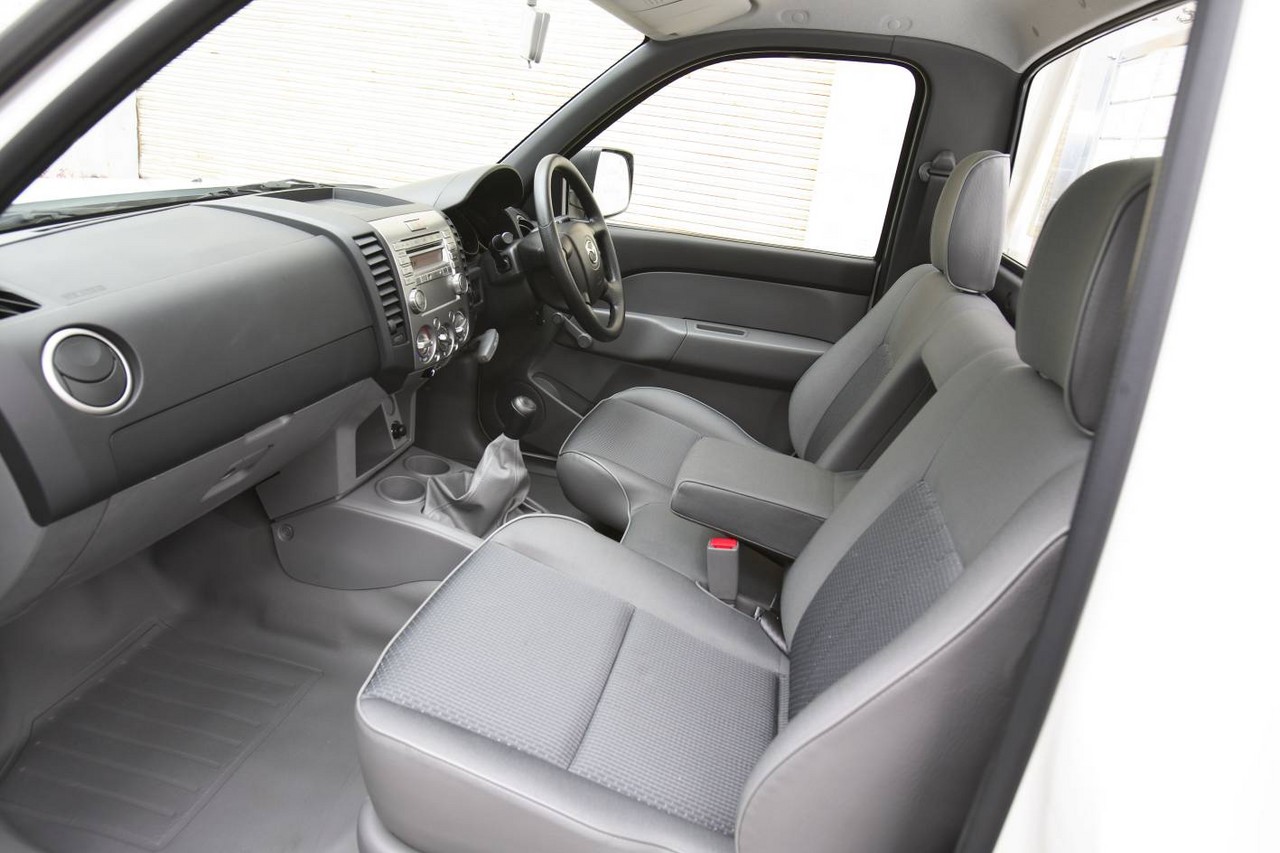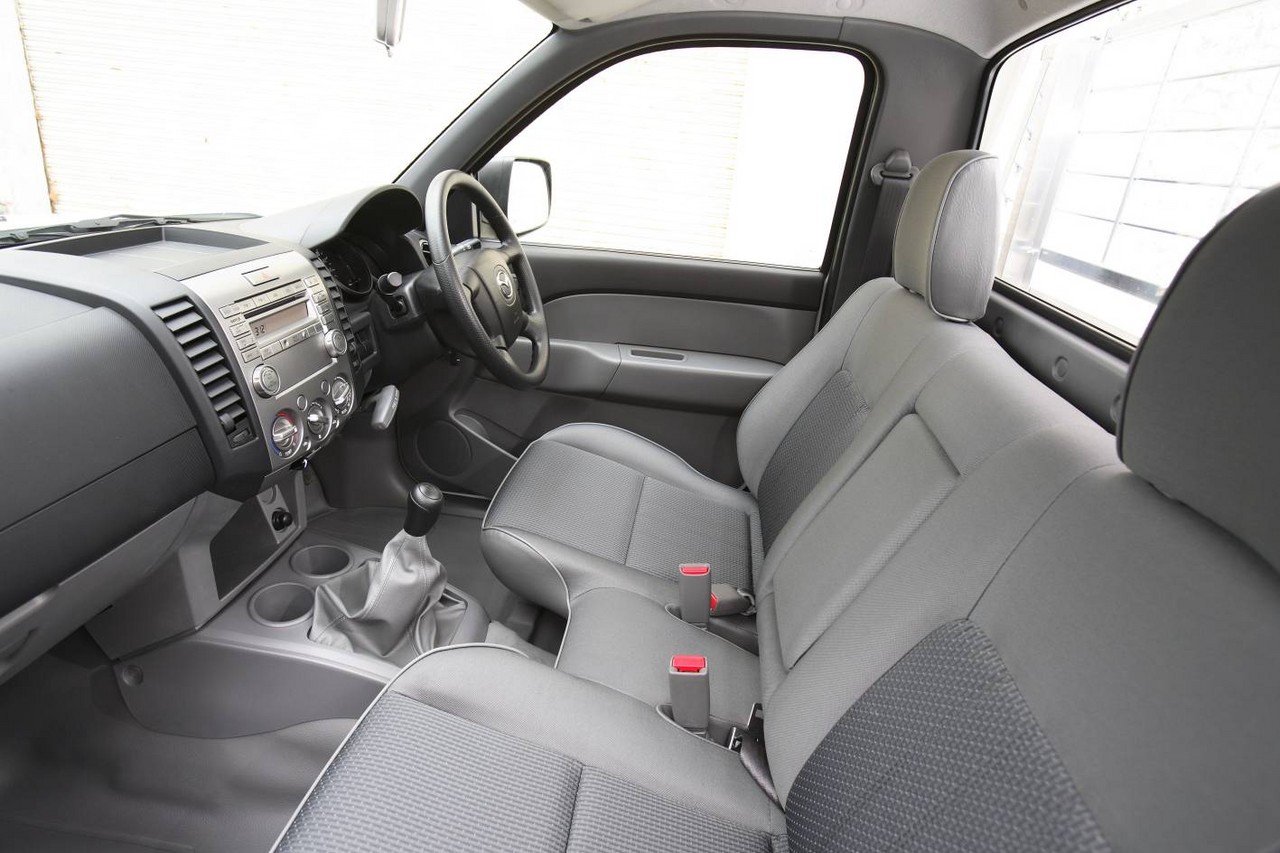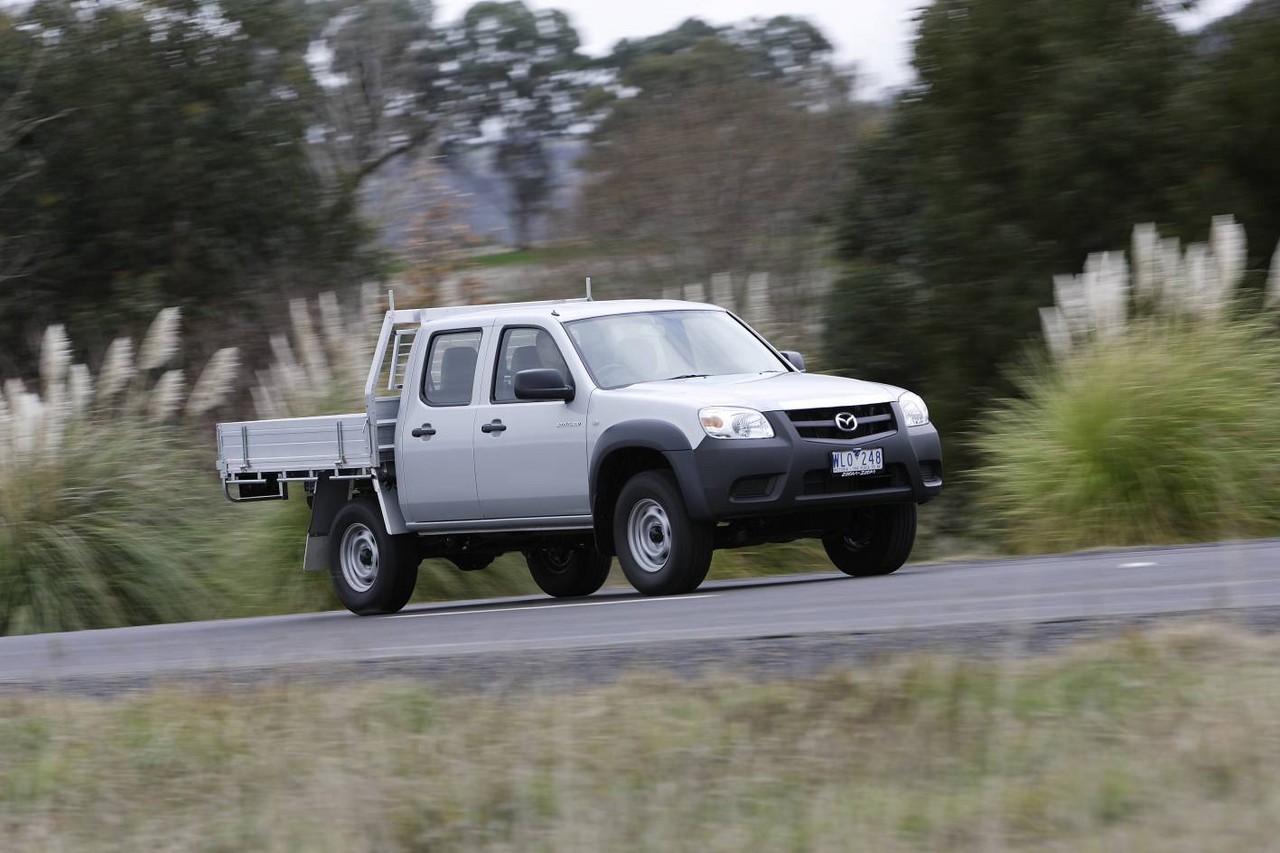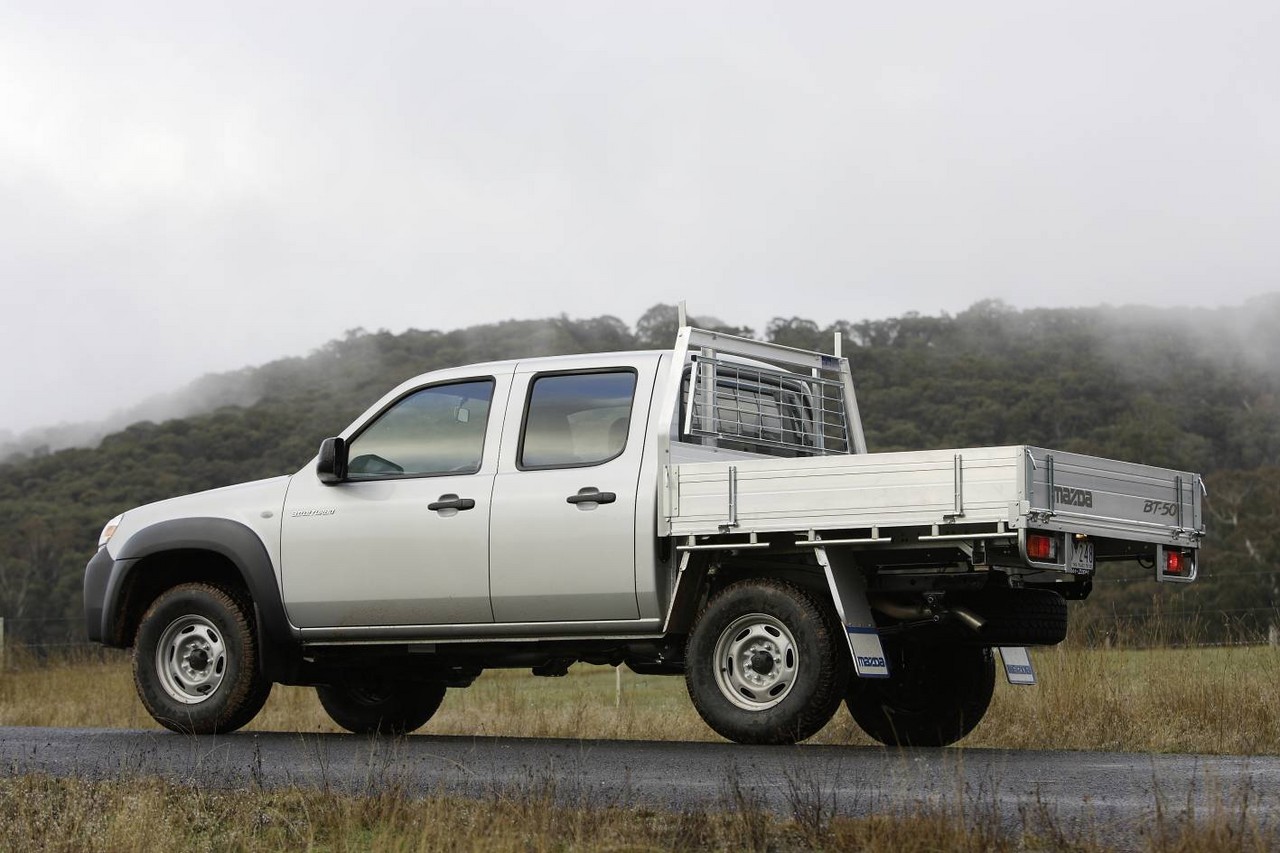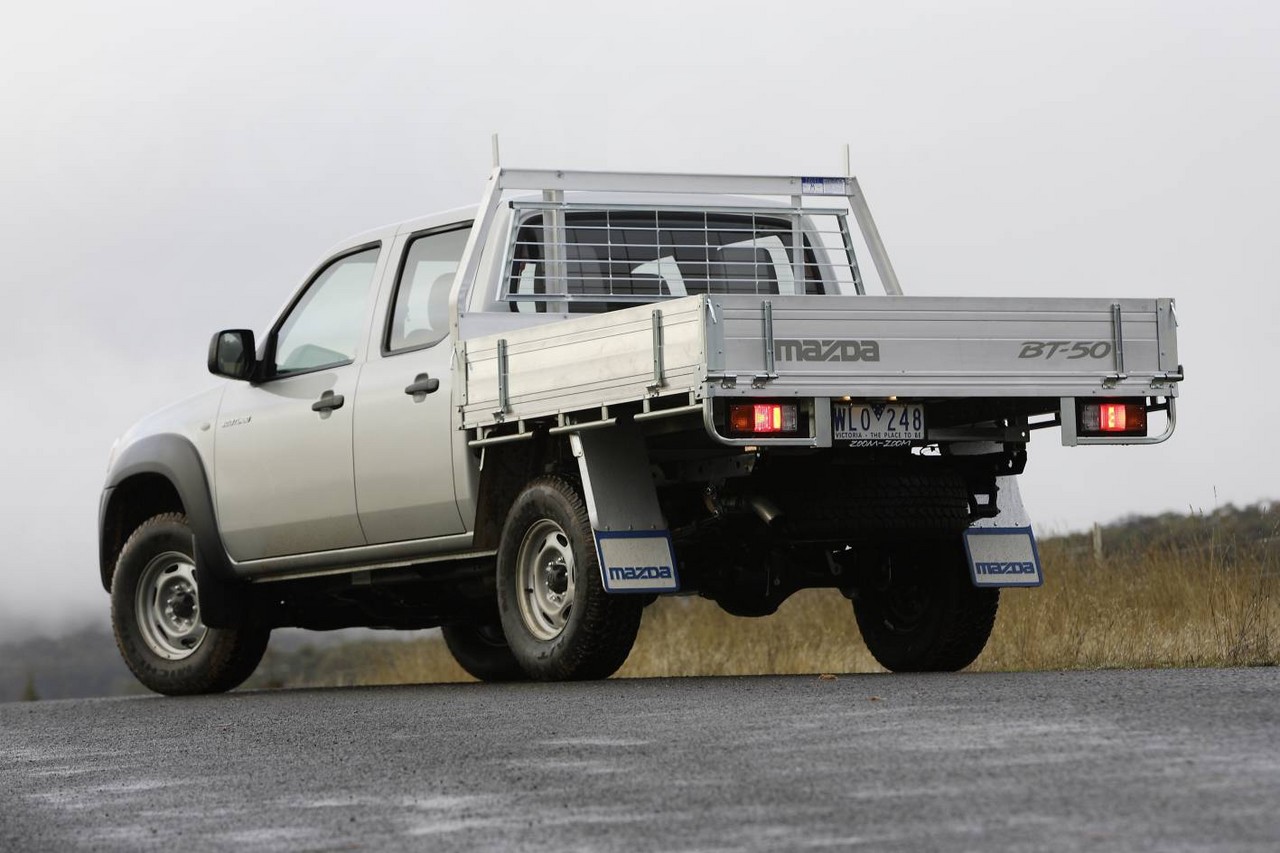
- Powerful and economical 3.0-litre turbo-diesel engines
- Manual transmission works well
- Good interior storage
- Suspension lacks compliance
- Vague steering
- Large turning circle for 4×4 models
Review: Mazda J97M.I BT-50 cab chassis (2006-08)
Overview
Released in November 2006, the Mazda J97M Series I (J97M.I) BT-50 cab chassis was initially available in single cab and Freestyle cab body types, the latter having rear-hinged doors such that a B-pillar was not required. The BT-50 was powered by either 2.5- or 3.0-litre common-rail, turbo-diesel engines with variable geometry turbochargers. For the cab chassis models, a five-speed manual transmission was standard across the range.
The four-wheel drive models had remote free wheel hub lock mechanisms and a manual 4WD transfer case shift lever that enabled the driver to select from 2WD (2H), 4WD High (4H), 4WD Low (4L) and neutral (N) drive modes. Furthermore, all four-wheel drive models were fitted with a limited slip differential, an underbody protector and mesh barrier guard to protect the intercooler.
The J97M BT-50 had an overlapped, cross-braced ladder-frame chassis, with double wishbone front suspension and leaf-spring rear suspension. Compared to its Bravo predecessor, the BT-50 had larger shock absorbers, longer leaf springs, increased carrying capacity, an improved steering system and braking response.
| Cab | Variant | Drive | Engine | Trans. | Peak power | Peak torque |
|---|---|---|---|---|---|---|
| Single cab |
DX | RWD | 2.5-litre turbo-diesel I4 | 5sp man. | 105 kW at 3500 rpm | 330 Nm at 1800 rpm |
| DX | 4WD | 3.0-litre turbo-diesel I4 | 5sp man. | 115 kW at 3200 rpm | 380 Nm at 1800 rpm | |
| Freestyle cab | DX+ | RWD, 4WD |
3.0-litre turbo-diesel I4 | 5sp man. | 115 kW at 3200 rpm | 380 Nm at 1800 rpm |
Safety equipment
Standard safety equipment for the Mazda J97M.I BT-50 included dual front airbags and front seatbelts with pretensioners and load limiters except forthe single cab four-wheel drive DX model (for which airbags could be unspecified). An airbag-compatible bull-bar was also offered on four-wheel drive models.
ANCAP crash testing
In ANCAP crash testing , a 2008 Mazda BT50 4WD dual cab utility received a three star adult occupant protection rating with a score of 22.46. In the offset crash test, the integrity of the passenger compartment was compromised; protection from serious leg injury was poor for the driver, while chest and upper leg protection was marginal for the driver. A default score was awarded in the side impact test.
Features
Standard features for the BT-50 DX included a two speaker radio with CD player and MP3-compatibility, remote central locking, a tilt adjustable steering wheel, 12 volt power outlet and an immobiliser.
The DX+ variants were further equipped with a four speaker sound system, power windows and tinted windows.
Specifications
Review: Mazda J97M.II BT-50 cab chassis (2008-09)
Overview
Released in September 2008, the J97M Series II (J97M.II) BT-50 cab chassis range was expanded with the introduction of dual cab models and subtle cosmetic updates. Visually, the J97M.II BT-50 could be identified by its new five-point grille, new headlights (with a more prominent chrome bezel), tail-lights and door mirrors with integrated indicators. Inside, there were new cloth trims, audio and ventilation controls and red backlighting instead of green for the instrument cluster.
| Cab | Variant | Drive | Engine | Trans. | Peak power | Peak torque |
|---|---|---|---|---|---|---|
| Single cab |
DX | RWD | 2.5-litre turbo-diesel I4 | 5sp man. | 105 kW at 3500 rpm | 330 Nm at 1800 rpm |
| 3.0-litre turbo-diesel I4 | 5sp man. | 115 kW at 3200 rpm | 380 Nm at 1800 rpm | |||
| Freestyle cab | DX+ | RWD, 4WD |
3.0-litre turbo-diesel I4 | 5sp man. | 115 kW at 3200 rpm | 380 Nm at 1800 rpm |
| Dual cab | DX | 4WD | 3.0-litre turbo-diesel I4 | 5sp man. | 115 kW at 3200 rpm | 380 Nm at 1800 rpm |
Features
Compared to its J97M.I predecessor, standard features for the J97M.II BT-50 cab chassis were extended to include air conditioning and an auxiliary sound system input. The newly introduced dual cab DX model was similarly equipped to the single cab DX.
Related links
- Press Kit: Mazda J97M.II BT-50 (September 2008)
- Specifications: Mazda J97M.II BT-50 (September 2008)
Review: Mazda J97M.III BT-50 cab chassis (2009-11)
Overview
Released in September 2009, the J97M Series III (J97M.III) BT-50 cab chassis was equipped with a new ‘Boss’ pack as standard, consisting of an aluminium tray, ladder rack, tool box and water tank. For four-wheel drive models, the Boss pack also included a bull-bar.
| Cab | Variant | Drive | Engine | Trans. | Peak power | Peak torque |
|---|---|---|---|---|---|---|
| Single cab |
DX | RWD | 2.5-litre turbo-diesel I4 | 5sp man. | 105 kW at 3500 rpm | 330 Nm at 1800 rpm |
| 3.0-litre turbo-diesel I4 | 5sp man. | 115 kW at 3200 rpm | 380 Nm at 1800 rpm | |||
| Freestyle cab | DX+ | RWD, 4WD |
3.0-litre turbo-diesel I4 | 5sp man. | 115 kW at 3200 rpm | 380 Nm at 1800 rpm |
| Dual cab | DX | 4WD | 3.0-litre turbo-diesel I4 | 5sp man. | 115 kW at 3200 rpm | 380 Nm at 1800 rpm |
Safety equipment
Compared to its J97M.II predecessor, safety equipment for the J97M.III BT-50 cab chassis was improved with all Freestyle and dual cab models fitted with ABS and electronic brake force distribution.
Features
Standard features for the BT-50 DX variants were extended to include power windows and mirrors. Furthermore, the Freestyle cab DX+ models were fitted with alloy wheels.
Related links
